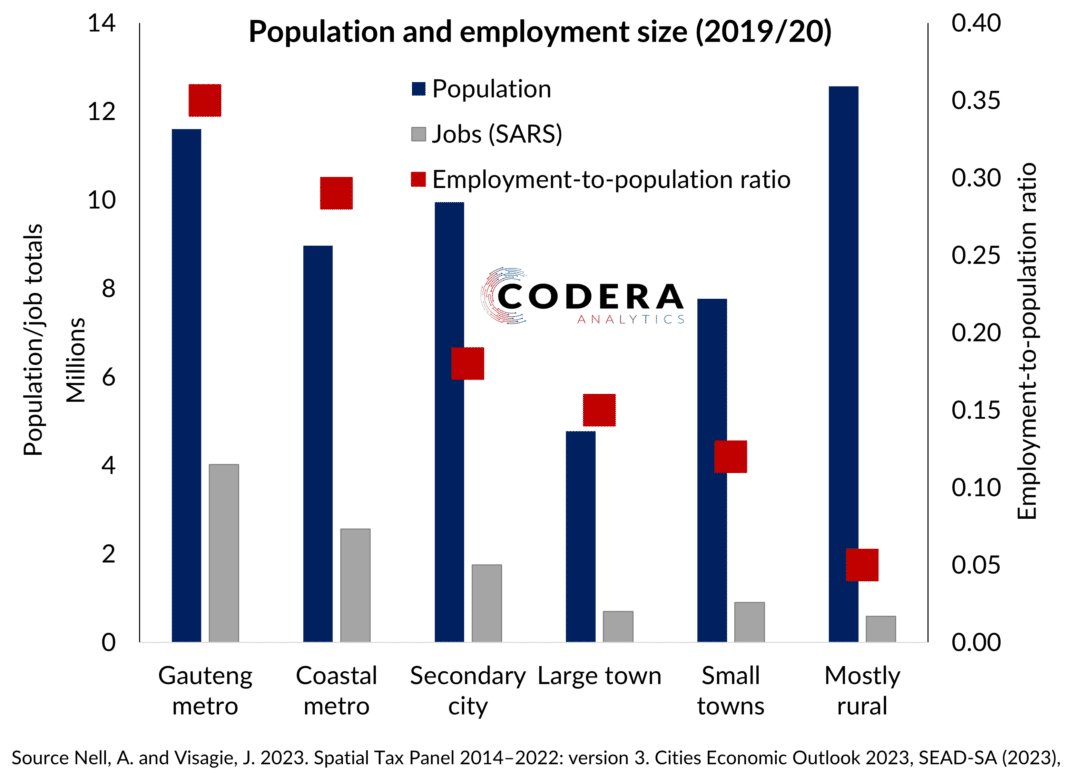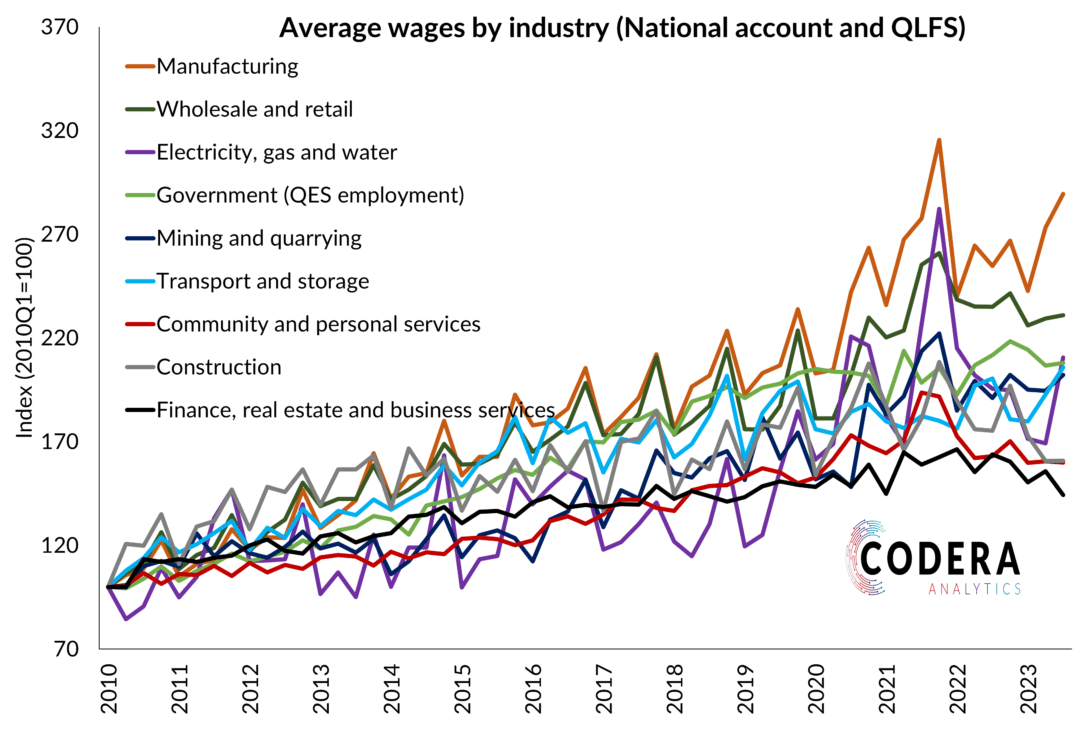How much does employment in a particular industry respond to economic growth? Today’s post provides some back-of-the-envelope estimates using industry employment and output for South Africa. We use employment data from the Quarterly Labour Force Survey, and use a simple model that estimates the responsiveness of employment within a specific industry to changes in growth in that sector. Said differently, the model asks whether employment tends to rise/fall when output in an industry rises/falls? The results suggest that employment in the community and social services sector is the most responsive to output in that sector. However, the elasticity estimate is likely heavily biased upwards as we have included government employment in our industry aggregation (on account of data availability). While private sector employment growth has been very low as a consequence of low economic growth, government employment has not been as much less cyclical and has increased over the sample. In the finance and business services industry, the estimates suggest employment responds roughly one-for-one with growth. In utilities, industry employment has responded negatively to output increases: for several of the years since 2008 employment increased in the industry despite falling output.


